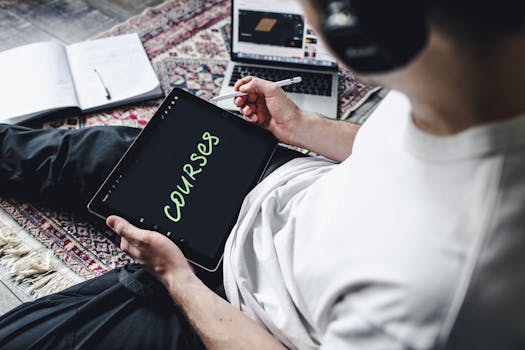Career
Craft Your Future: How to Build a Career-Inspiring Mood Board
Discover how to create an inspiring mood board that clarifies your career goals and reflects your professional aspirations, evolving alongside your journey.
Advertisement
Creating a mood board can serve as an essential tool in shaping your career trajectory. A mood board visually represents your aspirations, motivations, and career goals. Through images, colors, quotes, and materials, it can inspire you to pursue specific paths aligned with your personal and professional values.
Many successful professionals have used mood boards to crystallize their vision, serve as a source of motivation, and clarify their objectives. By exploring your interests and passions, you can create a visual roadmap. This creative process allows for exploration and personal reflection, which can significantly influence your career choices.
To garner the best results from a mood board, it’s essential to approach it intentionally. This guide will walk you through the steps to create a mood board that successfully inspires and directs your career path. Whether you’re a recent graduate or contemplating a career change, a well-crafted mood board can elevate your planning process.
Understanding the Concept of a Mood Board
A mood board is a collection of images, text, and samples that convey a particular style or concept. In a career context, it serves as a visual representation of your professional aspirations. The process of curating a mood board can clarify your goals.
A mood board operates as a source of inspiration and motivation. By visually displaying what you aim for, it becomes easier to focus on achieving these objectives. The creative process can help uncover deeper insights about your desires and values.
Furthermore, mood boards are not restricted to the traditional paper-and-glue method. Digital tools also allow for flexibility and ease of use. Applications like Pinterest or Canva provide platforms for crafting a personalized board.
In practice, mood boards can vary widely in appearance. They can be colorful and chaotic or sleek and professional, depending on your preferences. This personalization adds another layer of connection to your goals.
Ultimately, the aim is to create a mood board that resonates with you and reflects your professional aspirations. It serves as a tangible reminder of where you want to go in your career.
Choosing Your Theme and Focus
The first step in creating your mood board involves identifying a theme. This theme should reflect your current interests or career aspirations. Consider what areas of your work you find most fulfilling.
Next, think about the skills you wish to develop. Focusing on specific skills helps direct your career advancement through targeted opportunities. Align your board theme with your long-term professional goals.
Moreover, considering the industry you want to work in is essential. Research trends and emerging fields to give you inspiration for your mood board. This context will guide the selection of images and quotes.
As you define your focus, it may also be helpful to think through your values. Identifying what’s important to you can lend meaning to your theme. This added depth often makes your board more impactful.
Ultimately, choosing a clear and compelling theme will guide your creative process. A well-defined focus enhances motivation and serves as a foundation for constructing your mood board.
Gathering Your Materials
Once you’ve established a theme, it’s time to gather materials. The supplies can include magazines, photographs, and art supplies. If you are opting for a digital board, explore various websites and tools.
Utilizing magazines can provide a tactile experience. Flipping through pages can spark ideas and establish connections you might not have recognized digitally. Focus on visuals that capture the essence of your theme.
If you’re creating a digital mood board, stock photo websites are invaluable resources. Websites like Unsplash and Pexels allow access to high-quality images that align with your aspirations. Digital boards offer versatility in arranging and rearranging content.
In addition to images, consider including motivational quotes. Words from influential figures can inspire you to take action toward reaching your goals. They add emotional depth and can invigorate your purpose.
Finally, make sure to set aside time for this gathering phase. The collection process often sparks creativity and new ideas about your career path. Enjoy this exploration to enrich your mood board.
Creating the Layout
With your materials in hand, it’s time to plan the layout of your mood board. Decide whether you prefer a structured approach or a more freeform style. Both methods can be effective in their unique ways.
When opting for structure, consider grid layouts or segmented sections. This organization makes it easy to categorize different aspirations or skills. It provides clarity to your visual representation.
On the other hand, a freeform layout encourages spontaneity and creativity. It allows visuals and images to flow naturally. This approach can yield unexpected connections and discoveries about your career trajectory.
Regardless of the layout, consistency helps maintain cohesiveness. Use a specific color palette or style to unify your images. Consistency can enhance the emotional impact of your mood board.
Lastly, experiment with arrangements before finalizing your layout. Play with the placement of elements until it feels right. Allow your intuition to guide the positioning of key visual components.
Incorporating Personal Reflections
As you finalize your mood board, remember to infuse personal reflections. Consider writing short notes or captions that signify your thought process. These annotations can enhance the board’s meaning for you.
Reflecting on past experiences, both positive and negative, can provide valuable insights. This self-examination helps clarify the directions you wish to pursue. Acknowledge any lessons learned along the way.
Additionally, journaling about your goals lends intimacy to your mood board. Capture your thoughts on paper, expressing your vision for the future. This written component complements the visuals beautifully.
Engaging with your mood board regularly allows room for growth. As your career develops, so should your reflections and aspirations. Make adjustments as necessary to keep your board aligned with your journey.
By incorporating personal reflections, your mood board evolves into a living document. It serves not only as a visual pep talk but also as an ongoing record of your career aspirations.
Regularly Revisiting and Updating Your Mood Board
Creating a mood board is not merely a one-time activity; it requires regular revisiting. Schedule times to review your board, ensuring it remains relevant to your current situation and aspirations. Reflecting often helps keep you on track.
Updating your mood board is equally important. As you achieve goals or shift directions, swap out images and quotes that resonate more closely with your evolving career path. This keeps your inspiration fresh.
Tracking your progress and accomplishments can also be beneficial. Consider adding symbolic representations of milestones to your board. Celebrating achievements reinforces your commitment to growth.
Engaging with your mood board can transform it into a motivational tool. Create a ritual around connecting with your board, whether through visualization exercises or affirmations. This will deepen your commitment to your goals.
By continually revisiting and updating your mood board, you ensure it reflects your ambitions authentically. A dynamic board serves as a significant motivator as you navigate your career trajectory.
Conclusion
In conclusion, creating a mood board offers a unique way to visualize and direct your career trajectory. By identifying themes, gathering materials, and incorporating personal reflections, your mood board becomes a vital tool for motivation. Regular engagement with your board ensures it evolves alongside your professional aspirations.
Ultimately, the process of crafting a mood board not only clarifies your vision but also fosters a deeper connection to your goals. Embrace this creative journey, and allow your mood board to inspire your path forward.
As you embark on this exciting endeavor, utilize these steps to harness your potential. You have the ability to shape your career, and a well-crafted mood board can be a pivotal asset in that journey.





